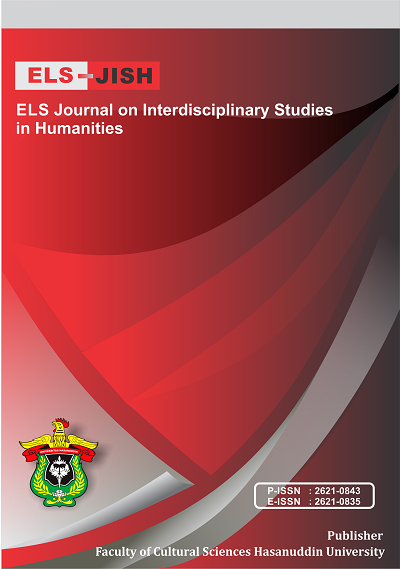Spiral Progression Approach in Science Curriculum: Student Perception on its Implementation
DOI:
https://doi.org/10.34050/elsjish.v6i2.26803Keywords:
Perception, Science Curriculum, Spiral Progression ApproachAbstract
The student’s perception on the implementation of spiral progression approach in science curriculum was studied using descriptive survey method. It also seeks to identify the profile of students and to determine how the spiral progression approach in science curriculum enhances the learning process. A researcher-made questionnaire was the instrument used in the study considering the four factors, namely: teaching strategies, instructional materials, equipment and apparatus and science laboratory room. The results of the study showed that majority of the respondents were13-15 years old, females, 3-4 number of siblings, family monthly income of Php 1,001-5,000, and parent’s educational attainments were high school level. The overall perception of the respondents on the spiral progression approach in science curriculum in terms of teaching strategies, instructional materials, equipment and apparatus, and laboratory room was rated agree. The overall mean on how can the spiral progression approach enhance the learning process was 2.93. This further mean that in enhancing the new science curriculum one should consider the teaching strategies used by teachers, the availability of instructional materials, equipment, apparatus and science laboratory room. School administrators should proactively respond to the needs of their schools concerning on the availability of science equipment, apparatus, instructional materials, and science laboratory room to enhance the effective teaching-learning process and to improve teaching effectiveness on teachers.Downloads
References
Andini, C., Yassi, A. H., & Sukmawaty. (2021). The Use of Honorifics in English and Buginese with special Reference to Bone Language: A Comparative Study. International Journal of Innovative Science and Research Technology, 6(7), 873-877.
Barrot, J. S. (2021). K to 12 curriculum reform in the Philippines: Towards making students future ready. Asia Pacific Journal of Education, 1-15.
Cabansag, M. G. S. (2014). Impact statements on the K-12 science program in the enhanced basic education curriculum in provincial schools. Researchers World, 5(2), 29.
Dunton, J. B. (2019, November). Spiral progression approach in teaching science and the performance of learners in District I, Capiz. In Journal of Physics: Conference Series (Vol. 1254, No. 1, p. 012045). IOP Publishing.
Grabmeier, J. (2015). More siblings means lower grades in school, study shows. Research News. Retrieved from https://researchnews.osu.edu/archieve/siblings.html.
Hasnia, H., Andini, C., Tahir, M. D., Hunaeni, H., Zulfikariandi, Z., & Muslimin, M. T. (2022). The Ability of 1st Class Students of SMAN 11 Enrekang to Arrange Verbal and Nominal Sentences. ELS Journal on Interdisciplinary Studies in Humanities, 5(3), 539-550.
K-12 Primer. (2013). Teachers’ lounge. Retrieved from http://www.rexpublishing.com.ph/basic-education/teacherslounge/basieducation/k-to-12-Primer/.
K to 12 Basic Education Program. (2012). The official gazette (Presidential Communications Development and Strategic Planning Office and PREGINET). Retrieved from http://www.gov.ph/.
Montebon, D. T. (2014). K12 science program in the Philippines: Student perception on its implementation. International Journal of Education and Research, 2(12), 153-164.
Orbe, J. R., Espinosa, A. A., & Datukan, J. T. (2018). Teaching chemistry in a spiral progression approach: Lessons from science teachers in the Philippines. Australian Journal of Teacher Education (Online), 43(4), 17-30.
Quijano, Yolanda S. & Technical Working Group on Curriculum. (2012). Orientation Division Coordinators. DepEd Complex.
Rahman, F. (2018). The Constraints of Foreign Learners in Reading English Literary Works: A Case Study at Hasanuddin University. Journal of Arts and Humanities, 7(2), 01-12.
Resurrecion, J. A. & Adanza, J. (2015). Spiral progression approach in teaching science in selected private and public schools in cavite. Proceeedings of the DLSU Research Congress, 3. Retrieved from https://www.dlsu.edu.ph/wp-content/uploads/pdf/conferences/research-congress-proceedings/2015/LLI/017LLI_Resurrecion_GF.pdf
Tupas, F. P., & Linas-Laguda, M. (2020). Blended Learning–An Approach in Philippine Basic Education Curriculum in New Normal: A Review of. Universal Journal of Educational Research, 8(11), 5505-5512.
Weda, S., Atmowardoyo, H., Rahman, F., & Sakti, A. E. F. (2021). Linguistic aspects in intercultural communication (IC) practices at a higher education institution in Indonesia. Eroupean Language Scientific Journal, 14, 2-6.
Downloads
Published
How to Cite
Issue
Section
License
Copyright (c) 2023 acut junpel

This work is licensed under a Creative Commons Attribution-ShareAlike 4.0 International License.

















